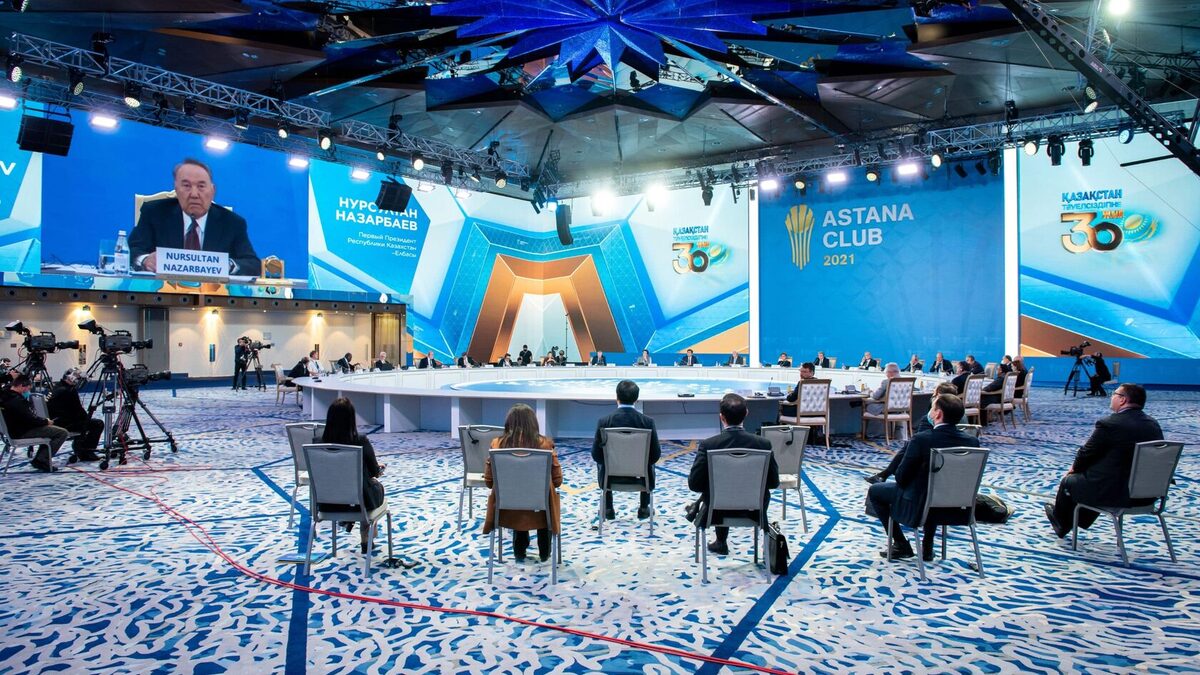 Image Credits: Astana Club
Image Credits: Astana Club
The 7th annual Astana Club international platform commenced its two-day program on December 11 in the capital city of Astana, focusing on discussions about Central Asia’s integration and emerging prospects for regional development. Damjan Krnjevic Miskovic, the director for policy research, analysis, and publications at the Institute for Development and Diplomacy (IDD), moderated the session on Central Asia’s future, urging participants to consider the region within a broader political context.
Johannes Linn, a nonresident senior fellow at the Brookings Institution’s Global Economy and Development program, discussed the unrealized dream of Eurasian economic integration, noting that the landscape changed after 2010 with the development of land routes between Europe and China. Central Asia, strategically positioned between the West and East, began reaping benefits from the growing interconnectedness. Linn emphasized Central Asia’s role in the International North–South Transport Corridor (INSTC), citing projects such as electricity supply to Pakistan and India and the construction of a gas pipeline from Turkmenistan to Asia.
The Central Asia-South Asia Electricity Transmission and Trade (CASA-1000) project, involving the Kyrgyz Republic, Tajikistan, Pakistan, and Afghanistan, was highlighted as a significant step in regional energy cooperation and cross-border electricity trade. Linn also addressed the critical issue of water management between Afghanistan and Central Asia, particularly the construction of the Qosh Tepa Canal in Afghanistan, impacting water resources crucial for both regions.
Ashok Sajjanhar, a research fellow at the Observer Research Foundation, pointed out that the Russian-Ukrainian crisis intensified the importance of fossil fuels in Kazakhstan, Uzbekistan, and Turkmenistan due to increased sanctions on Russia. This led to enhanced dialogues between Central Asia and Europe on energy resource transit, with the Trans-Caspian International Transport Route (TITR) gaining relevance, expanding its route to include Singapore, Lithuania, and Bulgaria in 2022.
Zhao Huasheng, a professor at Fudan University, emphasized Central Asia’s role as a continental bridge between China and Europe. He noted China’s efforts in promoting new railways with Kazakhstan, Kyrgyzstan, and Uzbekistan. In the first half of the year, Kazakhstan shipped 8.3 million tons of cargo to China by rail, a significant increase compared to the same period last year.
The meeting, attended by over 40 experts, government officials, and representatives from various think tanks, facilitated discussions on the evolving geopolitical landscape in Central Asia. Participants hailed from countries such as Belgium, China, India, Russia, South Korea, Spain, the United Kingdom, the United States, and Turkey, contributing to a diverse and comprehensive exploration of the region’s future and integration prospects.
